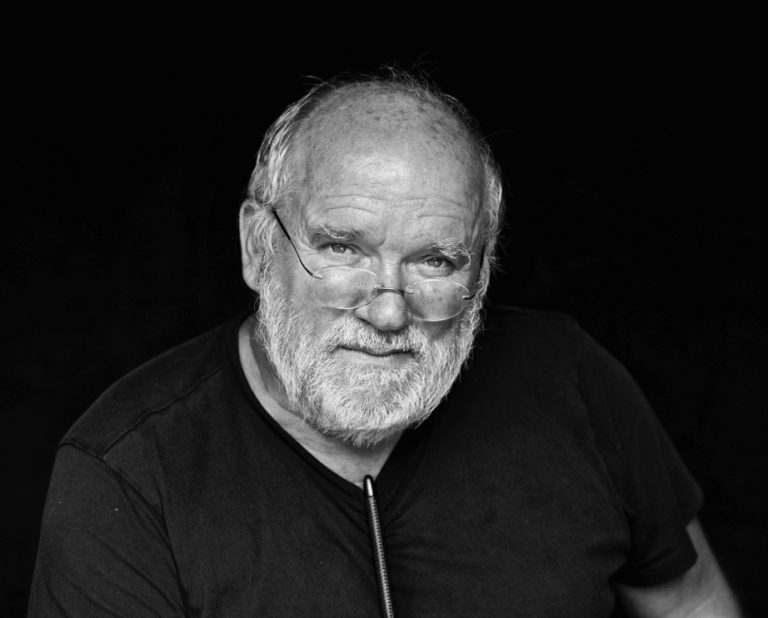The art of creativity is similarly valuable as the art of seen. Photography in itself is an interdisciplinary subject and an acceptable mass medium through which an artist can freely present himself or herself. One such photographer was Peter Lindbergh, one of the most famous and creative phenomenon in this century. He always wants to make exhibition to show his art.
The guy in young age worked as window dresser for department stores in Duisburg, preferred black and white medium. He said that “The real world is in color so if you use black and white, you take it out of the real, world, out of the banal”. When he was studying in Berlin Academy of Fine Arts, followed ways of Vincent Van Gogh, he was the part of Conceptual Art Movement in Germany (1969) and recalled his days “I preferred actively seeking out Van Gogh’s inspiration, my idol, rather than painting the mandatory portraits and landscapes taught in art schools.” After moving to Düsseldorf in 1971, he turned his attention to photography and worked for two years assisting German photographer Hans Lux, before opening his own studio in 1973. Becoming well known in his native country, he joined the Stern magazine family along with photographers Helmut Newton, Guy Bourdin and Hans Feurer. Peter first wife was Astrid (Who appeared with him in the documentary Peter Lindbergh – women’s Stories. His second wife name was Petra Sedlaczek.
He began his career as a painter before taking up photography in 1971. Upon moving to Paris in 1978, Lindbergh started working for Vogue, which eventually led to assignments for The New Yorker, Vanity Fair, Rolling Stone, and Harper’s Bazaar, among others. He shoots portraits of celebrities and supermodels for these publications and has also worked on sumptuous advertising campaigns for such top fashion houses as Giorgio Armani, Donna Karan, and Comme des Garçons.


Considered a modern pioneer in photography, he introduced a form of new realism by redefining the standards of beauty with timeless images. His humanist approach and idealisation of women sets him apart from the other contemporary photographers as he privileges the soul and the personality. He drastically changed the standards of the fashion photography in times of excessive retouching considering that there is something else that makes a person interesting, beyond their age.
He explains: “This should be the responsibility of photographers today to free women, and finally everyone, from the terror of youth and perfection.” His singular vision, presents them in their pure state, “in all honesty”, avoiding all stereotypes as he presents a face with hardly any make-up, with a baring that enhances the authenticity and the natural beauty of his women.
Lindbergh is the first photographer to include a narrative in his fashion series, as his storytelling brought a new vision of art and fashion photography. Over the years, he has created images that marked the history of photography, characterized by a minimalist approach of the post-modernist photography. Back in 1988, Lindbergh garnered international acclaim by showing a new generation of models all dressed in white shirts that he had recently discovered and launched their careers. A year later, Linda Evangelista, Naomi Campbell, Cindy Crawford, Christy Turlington and Tatjana Patitz, young models then, were photographed together for the first time by him for British Vogue’s legendary January 1990 cover. Lindbergh was visual art created the market of models, and because of his white-shirt photo-series, we discovered supermodel concept in fashion world.

He offered a new interpretation of women post – 1980s without paying too much attention to the clothes. Even He said that “If you take out the fashion and the artifice, you can then see the real person.”

His work is best known for his simple and revealing portraits, his still lives and his strong influences from early German Cinema and industrial surroundings of his childhood, dance and cabarets, but also landscapes and outer space. Lindbergh worked with the most prestigious fashion brands and magazines since the late 1970s, including international editions of Vogue, The New Yorker, Rolling Stone, Vanity Fair, Harper’s Bazaar US, Wall Street Journal Magazine, The Face, Visionaire, Interview and W.
In 2016, Lindbergh was commissioned for a record third time to create the 2017 edition of the Pirelli calendar, being the first one to photograph it more than twice in the fifty years history of the iconic calendar. He previously photographed the 1996 and 2002 editions. Valentino creative director Pierpaolo Piccioli said about Peter, “He codified a new language, built on the powerful intimacy of his images. A universal code that strongly contributes to the research around femininity. The intensity of his poetical vision will not be forgotten, his story is already legendary.”

Lindbergh was the only photographer to shoot the Pirelli calendar three times, in 1996, 2002 and 2017. Marco Tronchetti Provera, Pirelli’s executive vice president and chief executive officer said about Peter Lindbergh “His work will forever remind us of his vision and his perspective on the world, combined with a simplicity and humanity that made him that special person I had the good fortune to know.“



